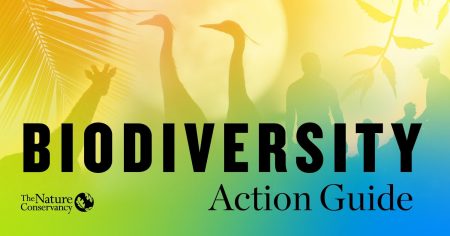Nature Conservancy Biodiversity Action Guide released

A new Biodiversity Action Guide has been released by The Nature Conservancy, containing case studies, tools and resources to aid nations in realising their commitments under the Conference of the Parties of the Convention on Biological Diversity (CBD), the UN Sustainable Development Goals and other global agreements.
The guide warns that this is the last decade in which we can take action to halt the biodiversity and climate crises facing every citizen of this planet. As governments prepare to set new global targets at COP15 and COP26, these dual crises must be faced with the necessary action to protect and restore nature for the benefit of all.
The guide highlights the abundance of nature-positive solutions available worldwide – well placed to replace current destructive practices. A variety of actions must also be employed in concert – utilising protection, management and restoration strategies to fight for a net gain of global biodiversity.
The key recommendations include:
- Diverse protection measures: Inclusion of all IUCN protected area categories, including ‘other effective area-based conservation measures’ (OECMs) like working with Indigenous Peoples and local communities to better manage lands and waters and reduce development pressure.
- Inclusive protection and respect for indigenous and local communities: Working in authentic, respectful partnership with communities to manage lands and waters responsibly.
- Cohesive protection across land, freshwater and marine habitats: Freshwater, coastal and high seas environments often receive less protection and require increased prominence and prioritization.
- Durable conservation: Conservation actions must be built and financed to last, with policies, legal structures and community support to enable protection measures and conservation areas to endure inevitable sociopolitical and economic change.
The case studies, strategies and tools are based in the CBD principles of biodiversity protection, sustainable use and equitable sharing of resources. The guide affirms that bold action and success is possible, with implementation over the next decade critical to success.
Fill in a short form to download the full Nature Conservancy Biodiversity Action Guide, or read the action guide summary feature.




